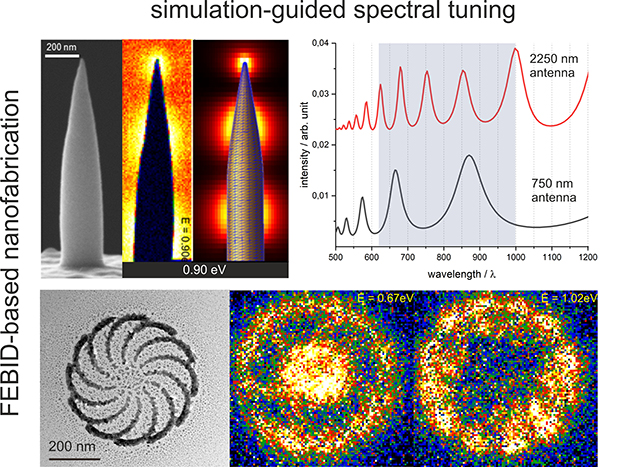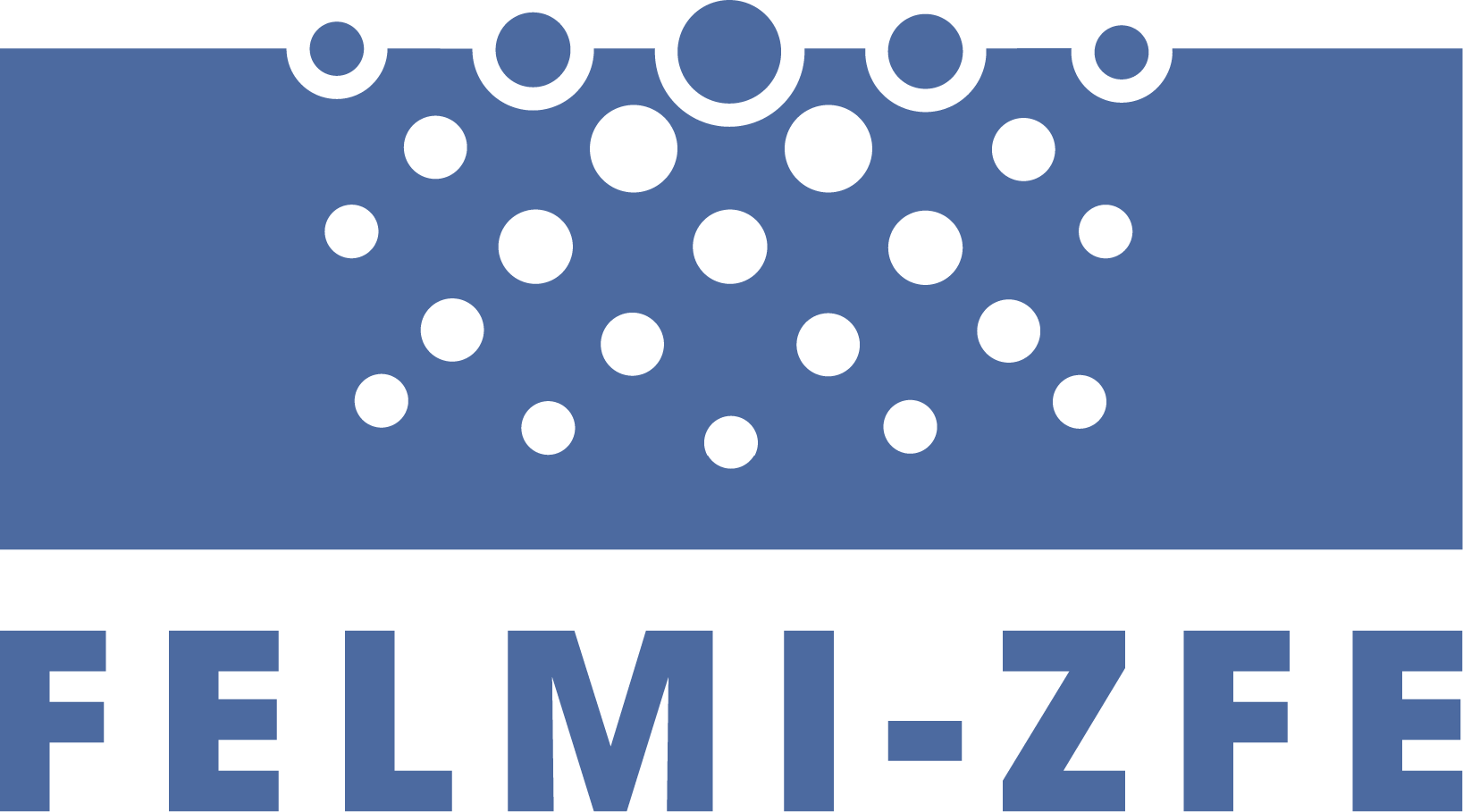Content
In this study we have successfully demonstrated that planar and 3-dimensional plasmonically active gold nanostructures can be reliably produced via FEBID and fine-tuned to generate resonances at desired wavelengths and spatial positions. As model systems, planar Au nanowires and 3D nanotips of different geometries are printed using FEBID and their plasmonic activities characterized by STEM-EELS measurements. The results are supplemented by corresponding simulations using the MNPBEM toolbox, which show a very good agreement with the experimental data. This allows to precisely adjust the optical activity in terms of spatial positions as well as wavelengths. This proof-of-concept now paves the way for the deductive upfront design of even more complex freestanding 3D nanoarchitectures to meet application-related target specifications without performing time-consuming, inductive trial-and-error approaches.

This Paper is available here: https://onlinelibrary.wiley.com/doi/10.1002/adfm.202310110
Relevance
Plasmonically active nanoparticles have the ability to focus light in highly amplified, optical nearfields, which is why they are already used in many areas such as sensor technology, optoelectronics, catalysis or quantum technology. For the formation and strength of the localized plasmonic resonances, material, geometry and size are decisive factors. Previous studies have mainly been limited to planar systems, as 3D plasmonically active nanostructures cannot be produced using conventional lithography methods. Reliable plasmonic mode development in all 3 spatial directions not only enables a deeper understanding of plasmonic effects, but could also have a significant influence on future optical technologies through vertical and horizontal mode coupling. We are currently working on fabricating 3D nanostructures with increased complexity, which will be used for targeted applications in the future.



